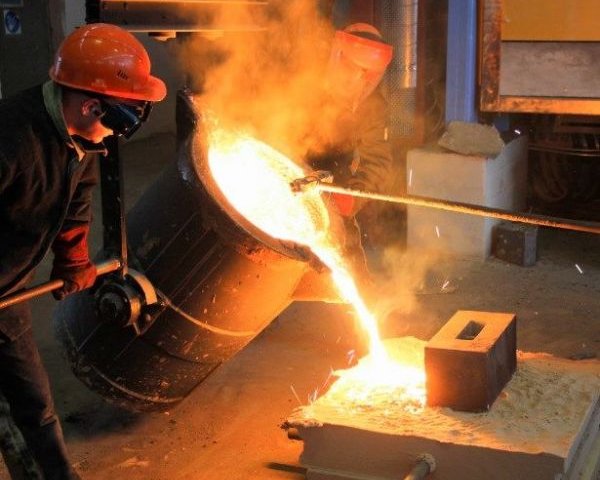The global iron and iron casting market was estimated at USD 130 billion at the end of 2017. It is expected to grow at an average annual rate of 4 percent from 2018 to 2026 to reach $ 202.7 billion, according to a new report released by Transparency Market Research.
The iron casting process involves the production of any object of the desired shape and size by casting or injecting molten iron into a mold. These products are manufactured on a large scale for a wide range of sectors such as oil and gas, agriculture, automotive, power generation, manufacturing and manufacturing equipment.
The market will be driven by the growth of heavy industries such as construction, mining, and automotive.
The growth of heavy industries such as automotive, mining and construction is the main driver of the iron and steel market. In particular, growing demand from the construction industry is likely to boost demand for iron and steel products in the near future. Construction equipment must be strong and durable. It has to bear low maintenance costs and withstand different loads and different climatic conditions. This type of equipment also requires raw materials with excellent properties. Iron is one of the most commonly used raw materials in the production of equipment for heavy industries such as power generation, manufacturing equipment, oil and gas, electrical and industrial equipment. Traditionally, the mining industry is an important end-user of iron and steel products. The industry is focused on reducing operating costs. The low operating costs and durability of cast iron and steel products make them suitable for use in the mining industry. The automotive industry uses cast iron and steel foundries to give strength and strength to automotive components and parts so that they can withstand varying temperatures and possible car accidents.
Availability of aluminum alloys as substitutes in the automotive industry to limit the market
Automotive manufacturers have shifted their focus to cast aluminum instead of conventional cast iron and steel products. They want to benefit from the superior properties of aluminum casting products such as corrosion resistance, lightness and high productivity. These products can also help manufacturers comply with emission limits set by various regulatory bodies. In addition, the use of aluminum can reduce the overall weight of a vehicle by 10-15%. The use of aluminum is preferred in electric vehicles to reduce vehicle weight. This, in turn, extends battery life. There are several other factors driving the use of aluminum in the automotive sector. The growing distribution of cast aluminum products is a constraint in the iron and steel casting market.
Government investment in infrastructure development is driving the iron and steel market
The governments of developed countries such as Canada, Britain, France and the United States are planning to invest in supporting infrastructure projects. On the other hand, governments in developing countries such as Brazil, South Africa, China and India are planning to develop projects from scratch. Several examples of such projects include a proposed bullet train in India; metro railways in several cities in India such as Pune and Nagpur; The Belt and Road Initiative developed by China. Other countries such as Pakistan, Sri Lanka, Rwanda and Tanzania are also planning to take the lead in such projects. Such projects require a large number of cast iron and steel products, which increases the demand for iron and steel products.
Global iron market by material, application and region
In terms of material, the global cast iron and steel casting market can be divided into gray iron, ductile iron and malleable steel. The gray iron segment has a leading market share and is expected to maintain its dominant position during the forecast period due to low production costs, high tensile strength, ductility and impact resistance of gray iron. Depending on the field of application, the market can be divided into automobiles and transport, pipes and fittings, pumps and valves, machinery and equipment, and others. The various properties of iron and steel, such as ductility, durability and impact resistance, make them highly suitable for use in the automotive and transportation industries. Automotive and transport se




